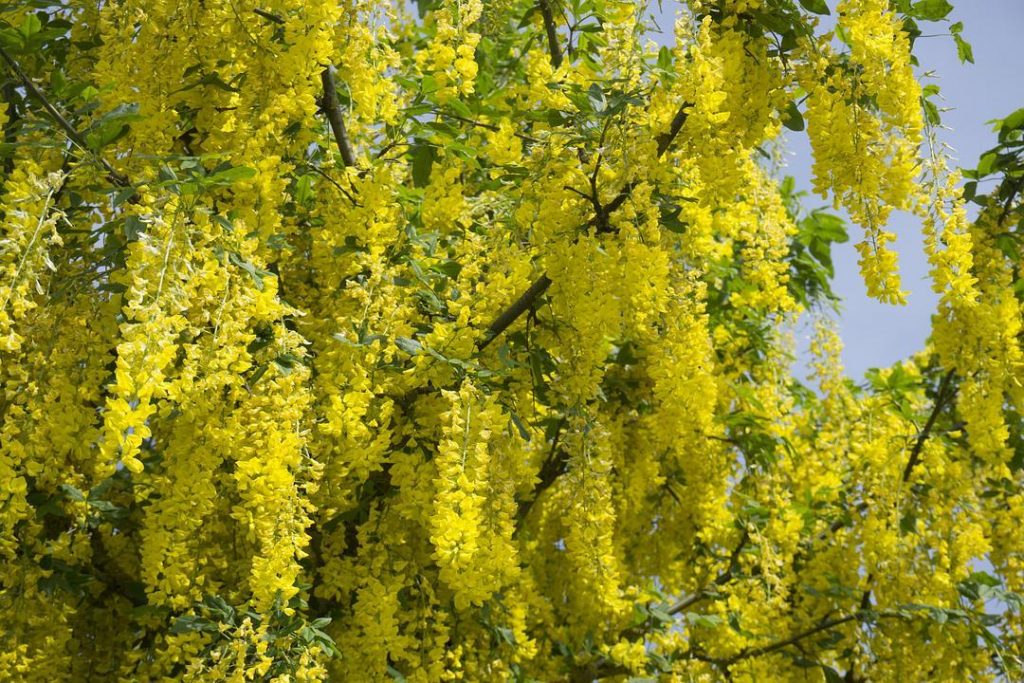Laburnum alpinum seed

Laburnum anagyroides, the common laburnum, golden chain or golden rain, is a species in the subfamily Faboideae, and genus Laburnum. Laburnum alpinum is closely related. It is native to Central and Southern Europe.
The plant is a small deciduous tree or large shrub up to 7 metres (23 ft) tall. It has smooth bark, dark green spreading branches and pendulous and pubescent twigs. The leaves are generally trifoliate and oval with long petioles, smooth on the upperside and hairy on the underside.
Laburnum anagyroides blooms in late spring with pea-like, yellow flowers densely packed in pendulous racemes 10-25 cm (4-10 in) long. The flowers are golden yellow, sweet scented, and typically bloom in May.
The seeds are legumes with large numbers of black seeds that contain cytisine, an alkaloid extremely poisonous to humans as well as goats and horses, especially when not ripe. However, some wild animals such as hares and deer can feed on them without any problems, and because of this the plant is believed to have magic properties in some regions.
All parts of the plant contain cytisine and are poisonous if consumed.
The wood is hard and heavy, of a yellow/brown colour, ideal for making posts, for woodturning and as fuel. In the past (and today on historic re-enactments) it was used for making bows.
Laburnum alpinum, commonly called scotch laburnum, is a small deciduous tree or large shrub that is most noted for its pendulous axillary racemes of yellow, wisteria-like flowers that bloom in spring. It typically grows 15-25? tall as a rounded tree and somewhat shorter as a shrub. Bright yellow, pea-shaped flowers in drooping racemes to 15? long bloom in mid-spring. Flowers give way to winged seed pods (2-3? long). Trifoliate, clover-like, glossy, medium to dark green leaves (to 3? long) produce little fall color. All parts of the tree are poisonous if ingested. Notwithstanding the common name, this species is not native to Scotland. It is native to the southern Alps, Czechoslovakia and Yugoslavia.
Growing Info:
Scarification: Pour boiling water over seed , repeat process on seed that did not imbibe; Seed coat may require filing or sanding to allow water infiltration~.
Stratification: none required, hard seed coat must be reduced by scarification~.
Germination: sow seed 1/4″ deep, tamp the soil, mulch the seed bed.
Other: if boiling water treatment does not allow seed to imbibe, sulfuric acid treatment is can also be used in place of filing / sanding.
